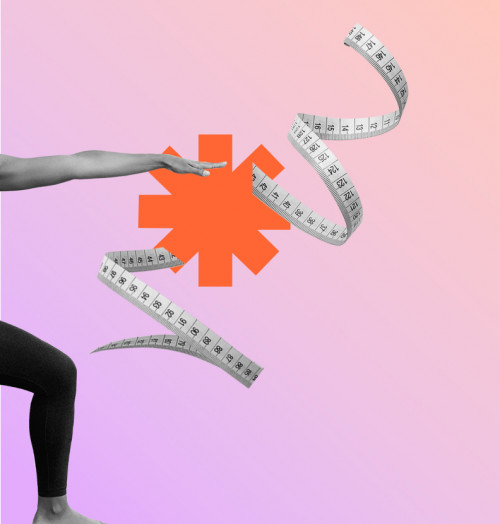One often-missed market provides a unique and stable opportunity for brands: The Voluntarily Child-Free (VCF)
Turning the Tide for Inclusivity
Over the last decade, LGBTQIA folks have gained immense visibility and acceptance in American culture. Legal protections are increasing, from the US Supreme Court affirming marriage equality for same-sex spouses in 2015 to expanded protections for Transgender people against workplace discrimination in 2020. Media representation is becoming more real and dynamic, from Laverne Cox’s trailblazing role as Sophia, a Trans woman behind bars, in Orange is the New Black to Nicole Maines’ role as Dreamer, TV’s first transgender superhero, on Supergirl. From fairness, to representation, to social change, more people are taking command of every facet of their communal and individual MYdentities. With 81% of US adults believing cultural diversity makes our nation stronger, people and brands are propelling inclusivity to the forefront.* While there’s still a ways to go, marketers need to reflect and accurately represent the tapestry of diverse people’s lives.
In media, brands are putting in the work towards equitable diverse talent behind and in front of the camera – starting with identifying the gaps. GLAAD’s 2020 “Where We Are on TV” report noted for the first time in its 25-year history more LGBTQ people of color than white LGBTQ recurring roles were represented. BIPOC made up over half of LGBTQ roles across broadcast (53%) and cable (52%), and 47% across streaming. Though positive, the report found overall LGBTQ representation YOY is down. With incremental success, some content makers are holding themselves accountable. In the spirit of transparency and growth, Netflix published a study that analyzed their original content from 2018 and 2019 across 22 inclusion indicators spanning depth of representation of underrepresented groups like women, LGBTQ, BIPOC, and people with disabilities. Unsurprisingly, the report revealed that the brand has a long way to travel on the path of true inclusivity. Only 2.8% of speaking or named characters were LGBTQ, with Gay characters accounting for the majority at 1.6%. To solidify their pact in furthering greater representation and inclusivity, Netflix announced the Netflix Fund for Creative Equity. The $100 million endowment will be distributed amongst organizations dedicated to uplifting underrepresented communities within the industry as well as bespoke Netflix initiatives that identify, train, and provide job placement for up-and-coming talent over the next five years.
While inclusion in film is slowly progressing, some brands are creating more opportunities for people to live their full selves daily. Despite the fact that legal name changes can be liberating and gender affirming, especially for Queer and Trans individuals, it is a laborious and tedious process often met with micro-aggressions. Helping make name changes a little more accessible, Citi is the first major bank to let cardholders use their chosen name on credit cards. Cardholders who tap into the True Name feature can now feel confident about transactions made without daily reminders of an identity they don’t associate with but are legally tied to. The small but mighty option levels the field of equal opportunity between Gender-Conforming and Gender-Nonconforming communities.
With the pandemic deepening the gap of adequate care, people are stepping in to change the face of healthcare for Queer and Trans communities. According to the 2020 Healthcare Equality Index, over half (56%) of LGB individuals and 70% of Transgender or Gender Non-conforming patients report being discriminated against while seeking medical treatment in healthcare settings. A.G. Breitenstein, who is Non-binary Lesbian and a healthcare industry veteran, founded telehealth platform Folx Health in December 2020 to help Queer and Trans individuals get the fair medical treatment they deserve. While currently only offering Hormonal Replacement Therapy and Erectile Dysfunction medication, the company plans to grow with at-home STI treatment customized for Queer and Trans bodies, on-demand clinical support, home-delivered medication, and an in-depth resource library. As of February 2021, the brand raised $25 million, which it will use to expand its virtual clinical offerings for extended judgement-free care safely in the comfort of people’s homes.
Brands can turn the tide for inclusivity, too. One size does not fit all. A fashion brand can prove its commitment to inclusivity with true inclusive sizing. Provide online and in-store ordering options to have shoe and apparel sizing tailored to individual preferred fits. Consider “Make it Mine” widgets on site for people to manually enter their specs and have options to save their custom sizes to customer profiles for future orders. The perfect stilettos for a 6’4 Trans woman – check! The perfect baggy jeans for a petite-sized gender-nonconforming person – a done deal! Spread word of your brand’s inclusive efforts through Queer and Trans influencers and promote the launch with a portion of first-time purchases donated to LGBTQIA non-profit organizations.
Source: *Horizon Media, Finger on the Pulse. Survey fielded 11/11/20-11/17/20, n=864




